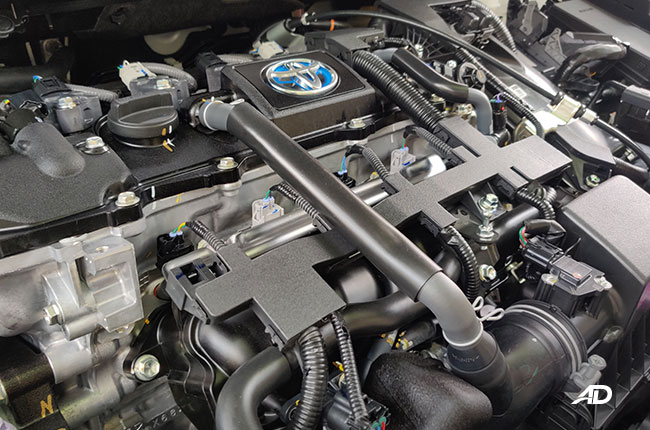
Often seen in hybrid cars and some gasoline-only models, the Atkinson Cycle engine is often advertised, but never fully expounded upon by the brands that sell them. The long-story-short summary of it is that the engine is more fuel-efficient than a standard gasoline motor.
While the bottom line is all that matters when you make your vehicle purchase, it’s good to know what makes the Atkinson cycle different so you won’t get bombarded with wrong information when someone thinks they know what they’re talking about. Knowledge is power, my friends.
Brief history
The internal combustion engines you see today are the result of over a century’s worth of innovation and patents. The most prominent combustion cycle we see on the road today is the Otto four-stroke combustion engine, which James Atkinson knew about and wanted to improve upon. After a few dealings with the patent office, the Atkinson engine was patented in 1882, but it didn’t take off. However, his development would become more widespread in the 21st century, where fuel efficiency is a thing.
Examples

You’ll more commonly find an Atkinson cycle engine in a hybrid vehicle, however, certain models like the Kia Seltos, and Hyundai Kona, are both equipped with these kinds of engines even without a hybrid motor to assist.
The reason why Atkinson cycle motors are used in hybrids is because of their fuel efficiency, and the fact that at lower RPMs, these engines aren’t as torquey as a traditional Otto cycle. That’s the reason why the Seltos and the Kona get bigger engines compared to their other rivals who opt for traditional motors—with or without turbochargers in lower displacements.
How it works

Before we get into it, let’s review the combustion cycle in an engine. You may remember it with a simple phrase: Suck, Squeeze, Bang, and Blow, which are oversimplifications—and frankly, crass words—to denote the intake, compression, combustion, and exhaust strokes of a four-stroke gasoline engine.

Traditional Otto cycle engines will close the intake valve as soon as the piston starts its compression stroke. In an Atkinson Cycle motor, the intake valve stays open until the piston is about 20% to 30% of the way through its compression stroke, or on the way up.
Why is it more efficient?
Because the combustion chamber isn’t chock full of air, there is a low engine speed power reduction. The result is a lower power engine compared to a traditional Otto cycle by alleviating the load on the piston in the compression stroke by giving it a little more room to breathe, the Atkinson Cycle motor is more efficient. Because there is less air in the combustion chamber, the injector doesn’t need to supplement as much fuel. Remember, the engine also relies on its own power to keep the combustion cycle going. Essentially, an Atkinson cycle engine fine-tunes the combustion process in order to minimize the parasitic power loss that most normal engines experience at the expense of a little more power.
Latest Features
-
The 6 things every Ford Ranger must pass before it leaves the factory / Featured Article
Every Ford Ranger, from the base model to the Ranger Raptor, goes through a full inspection process before it leaves the factory. This includes six steps that make sure it’s ready to drive a...
-
Which GAC AION EV is best for your everyday lifestyle? / Featured Article
The GAC AION lineup has something for everyone, maybe you're after space, speed, or just a smooth city drive. Here's a quick breakdown of which model might work best for your day-to-day life...
-
The AutoDeal Awards 2024: Celebrating excellence in the auto Industry / Featured Article
The AutoDeal Awards 2024: Celebrating excellence in the auto Industry
Popular Articles
-
Cheapest cars under P700,000 in the Philippines
Jerome Tresvalles · Sep 02, 2024
-
First car or next car, the Ford EcoSport is a tough package to beat
Jun 18, 2021
-
Car Maintenance checklist and guide – here’s everything you need to know
Earl Lee · Jan 12, 2021
-
Most fuel efficient family cars in the Philippines
Bryan Aaron Rivera · Nov 27, 2020
-
2021 Geely Okavango — Everything you need to know
Joey Deriquito · Nov 19, 2020
-
Family cars in the Philippines with the biggest trunks
Sep 20, 2023
-
Head to head: Toyota Rush vs. Suzuki XL7
Joey Deriquito · Oct 28, 2020
-
Why oil changes are important for your car
Earl Lee · Nov 10, 2020
-
2021 Kia Stonic — What you need to know about it
Joey Deriquito · Oct 16, 2020
-
Top 7 tips for buying a used car in the Philippines
Joey Deriquito · Nov 26, 2020




